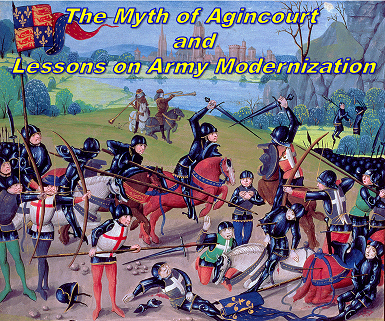[Editor’s Note: In today’s post, returning guest bloggers Mr. Joseph DeFranco, CAPT (USN – Ret.) L. R. Bremseth , and Dr. James Giordano examine … Read the rest
166. Designer Genes: Made in China?
[Editor’s Note: Returning guest bloggers Mr. Joseph DeFranco and Dr. James Giordano explore the emerging geo-political ramifications and associated ethical implications of recent advances in … Read the rest
165. Damnatio Memoriae through AI
[Editor’s Note: In today’s post, proclaimed Mad Scientist and returning guest blogger Ms. Marie Murphy addresses the implications of weaponized Artificial Intelligence (AI) when … Read the rest
164. The Myth of Agincourt and Lessons on Army Modernization
[Editor’s Note: Today’s post by returning guest blogger Mr. Ian Sullivan examines the Battle of Agincourt and turns the heretofore orthodoxy of thought regarding … Read the rest
163. “Second/Third Order, and Evil Effects” – The Dark Side of Technology (Part II)
[Editor’s Note: In Part I of this series, Dr. Nick Marsella addressed the duty we have to examine our assumptions about emergent warfighting technologies / … Read the rest





